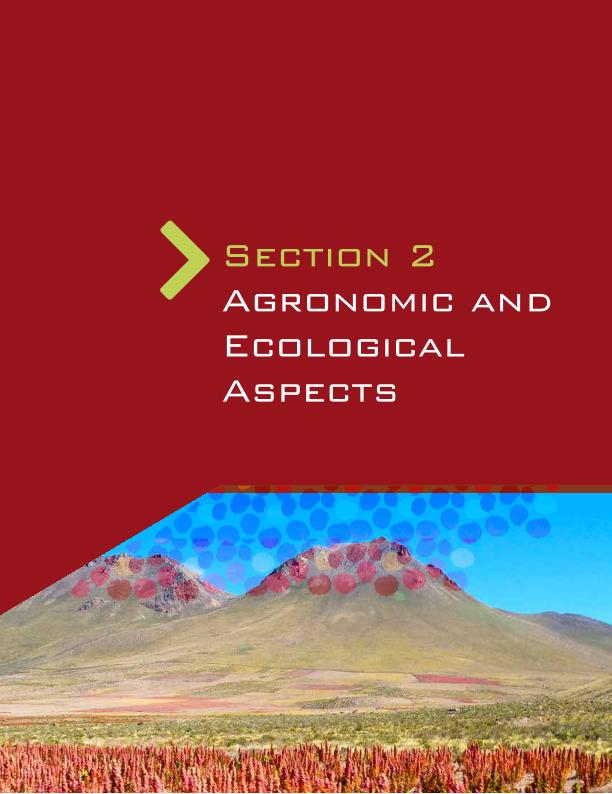Mostrar el registro sencillo del ítem
dc.contributor.author
Bertero, Hector Daniel

dc.date.available
2022-07-13T13:38:36Z
dc.date.issued
2015
dc.identifier.citation
Bertero, Hector Daniel; Environmental control of development; Organización de las Naciones Unidas para la Alimentación y la Agricultura; 2015; 120-130
dc.identifier.isbn
978-92-5-108558-5
dc.identifier.uri
http://hdl.handle.net/11336/161999
dc.description.abstract
The duration of development stages is one of the keydetermining factors of the adaptation of a species,conditioning adjustment to the growing season, thedistribution of photoassimilates, water and nutrientabsorption and lastly, the yield achieved. Four factorsaffect the progression of quinoa development: temperature,photoperiod, hydric status and radiation;the last two variables have been barely analysedin terms of its impact on development and there isdocumented genetic variability regarding sensitivityfor the first two. Temperature is the environmentalfactor with the highest relative impact on durationof development. Sensitivity to temperature wasevaluated for the time to visible floral buds and leafappearance rate; variability for both variables is associatedwith characteristics of the original environments,being higher in environments with limitedwater and low temperatures, indicating that adaptationto short growing seasons is expressed throughhigher earlyness, partly offset by a higher leaf appearancerate, whilst most late genotypes are foundin more humid and warmer environments. Quinoabehaves as a short-day plant and the higher photoperiodsensitivity is expressed in valley genotypes,grown between Argentina and Colombia. At the oppositeextreme, those in the southern Altiplano, includingBolivia and north-western Argentina, togetherwith Chilean sea-level genotypes, show little or nosensitivity to this factor in respect of time to flowering.Photoperiod sensitivity is manifested from theearly stages of development up to advanced stagesof grain filling; there is also variability in the duration of the sensitive period.
dc.format
application/pdf
dc.language.iso
eng
dc.publisher
Organización de las Naciones Unidas para la Alimentación y la Agricultura
dc.rights
info:eu-repo/semantics/openAccess
dc.rights.uri
https://creativecommons.org/licenses/by-nc-sa/2.5/ar/
dc.subject
quinoa
dc.subject
development
dc.subject
photoperiod
dc.subject
temperature
dc.subject.classification
Agricultura

dc.subject.classification
Agricultura, Silvicultura y Pesca

dc.subject.classification
CIENCIAS AGRÍCOLAS

dc.title
Environmental control of development
dc.type
info:eu-repo/semantics/publishedVersion
dc.type
info:eu-repo/semantics/bookPart
dc.type
info:ar-repo/semantics/parte de libro
dc.date.updated
2022-06-21T19:30:49Z
dc.journal.pagination
120-130
dc.journal.pais
Italia

dc.journal.ciudad
Roma
dc.description.fil
Fil: Bertero, Hector Daniel. Universidad de Buenos Aires. Facultad de Agronomía. Departamento de Producción Vegetal. Cátedra de Producción Vegetal; Argentina. Consejo Nacional de Investigaciones Científicas y Técnicas. Oficina de Coordinación Administrativa Ciudad Universitaria; Argentina
dc.relation.alternativeid
info:eu-repo/semantics/altIdentifier/url/https://www.fao.org/documents/card/es/c/3638200e-1fbb-4d7e-a359-d8f582b1d082/
dc.conicet.paginas
605
dc.source.titulo
State of the Art Report of quinoa in the world in 2013
Archivos asociados
